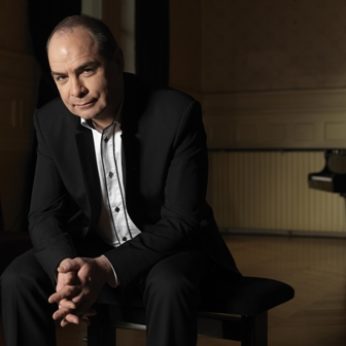Composer: Ludwig van Beethoven (b. 1770 - d. 1827)
Performance date: 02/07/2010
Venue: St. Brendan’s Church
Composition Year: 1785
Duration: 00:24:11
Recording Engineer: Anton Timoney, RTÉ lyric fm
Instrumentation: 2vn, va, vc
Instrumentation Category:Piano Quartet/Piano Quintet
Instrumentation Other: pf, vn, va, vc
Artists:
Philippe Cassard -
[piano]
Pekka Kuusisto -
[violin]
Hartmut Rohde -
[viola]
Anja Lechner -
[cello]

Beethoven was only fourteen when he wrote his three piano
quartets, whose publication he never approved – Artaria published them
posthumously in 1828. Almost certainly the reason Beethoven never authorised
their publication is their obvious debt to Mozart. Beethoven’s composition
teacher since he was nine was Christian Neefe, who introduced Beethoven to
Bach’s Das Wohltemperirte
Clavier as well as Mozart’s
music. Neefe was an impresario as well as court organist and when he took his
opera company on tour in 1782, Beethoven took over his organist duties at the
tender age of eleven – and by 1784 Beethoven was Neefe’s salaried assistant.
And in the 1782-3 season one Neefe’s Bonn productions was Mozart’s Die Entführung aus dem Serail. When Beethoven moved to Vienna he
wrote to Neefe: I thank you
for your advice which you so often gave me as I progressed in my divine art. If
some day I become a great man, you too will have a share in it.
The E flat Piano Quartet is
extensively modelled on Mozart’s G major Violin Sonata K.379, which had been
published in Vienna in 1781.
Mozart’s Sonata has an unusual form – it begins with an Adagio in which only
the first part is repeated, with the second part leading into an Allegro in
triple time, while the finale consists of a cantabile theme, five variations, a reprise
of the theme plus a short coda. Beethoven preserves all these features except
he adds an extra variation in the finale and his Adagio theme is very similar
to Mozart’s. The differences however are also notable – Beethoven’s work is
substantially bigger, more instruments, more bars, more difficult, greater
dynamic range, greater dramatic intensity – before our eyes and ears we see
Mozart being transformed into the young Beethoven. No wonder he could not
publish it.
Copyright © 2025 West Cork Music. All rights reserved.
Designed and developed by Matrix Internet